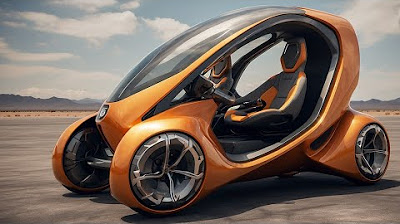Top 10 Emerging Technologies of 2024 (According to Science)
Summary
TLDRThe video explores the top 10 transformative technologies of 2024, each poised to redefine our future. From xenotransplantation offering hope to organ waitlists with pig hearts for humans, to innovative feeds from food waste for sustainable livestock, and carbon-capturing microbes combating climate change. Elastocaloric materials promise more efficient cooling, while immersive tech and ISAC enhance construction and connectivity. High-altitude platforms aim to bridge the digital divide, and reconfigurable intelligent surfaces could revolutionize signal management. Privacy-enhancing technologies and AI in scientific discovery round off the list, tackling data protection and accelerating research. These advancements, while groundbreaking, also present ethical and practical challenges that will shape their impact.
Takeaways
- 🐷 Genomics for transplants: The first human recipient of a genetically modified pig heart in 2024 signifies a breakthrough in xenotransplantation, aiming to alleviate the organ shortage crisis.
- 🌱 Alternative livestock feeds: Utilizing food waste and insects to create sustainable animal feed, addressing both food scarcity and waste management issues.
- 🌿 Carbon capturing microbes: Engineered bacteria and algae that can efficiently convert CO2 into useful products, potentially mitigating climate change.
- 🔄 Elastocaloric materials: Materials that change temperature upon stretching or compressing, offering a more efficient way to heat and cool our environment.
- 🏙️ Immersive technology: AR and digital twins are transforming urban planning and construction, enhancing efficiency and reducing errors.
- 📡 Integrated sensing and communication: ISAC technology can turn wireless infrastructure into a sensing system, with applications in smart cities and healthcare.
- 🌐 High altitude platform stations: HAPS aim to provide internet connectivity to remote areas, bridging the digital divide and aiding in disaster response.
- 📶 Reconfigurable intelligent surfaces: RIS can dynamically alter electromagnetic properties to enhance network capacity and improve indoor positioning.
- 🔒 Privacy enhancing technologies: PETs like homomorphic encryption and federated learning are designed to protect personal data while enabling new forms of data sharing.
- 🧠 AI for scientific discovery: AI is revolutionizing drug discovery, material science, and theoretical physics, offering new insights but also raising concerns about bias and access.
Q & A
What is the significance of the xenotransplantation breakthrough mentioned in the script?
-The xenotransplantation breakthrough, where a genetically modified pig heart was transplanted into a human, signifies a potential solution to the shortage of organ transplants, offering hope to many on waiting lists.
What are the ethical concerns associated with xenotransplantation?
-Xenotransplantation raises ethical concerns regarding animal rights and the potential risk of zoonotic diseases being transmitted to humans.
How can food waste be repurposed to address food scarcity and waste management?
-Food waste can be repurposed by using black soldier fly larvae to break it down into protein-rich material for animal feed, or by converting it into single cell proteins from bacteria, yeast, or algae.
What is the potential impact of engineered microbes on climate change?
-Engineered microbes can consume CO2 more efficiently and convert it into useful products, potentially sequestering large amounts of CO2 and mitigating greenhouse gas emissions.
How do elastocaloric materials work, and how could they improve energy efficiency?
-Elastocaloric materials change temperature when stretched or compressed and return to their original temperature upon release, absorbing heat in the process. They could be 20 to 30% more efficient than traditional vapor compression systems.
What is the role of immersive technology in the built environment?
-Immersive technology, such as digital twins and augmented reality, is changing how we design, construct, and interact with our surroundings, optimizing everything from traffic flow to energy consumption.
How does ISAC technology enhance wireless infrastructure?
-ISAC technology uses radio waves to transmit data and gather environmental information, creating detailed maps and detecting movement, which can increase network capacity and enable new applications.
What are high altitude platform stations (HAPS) and their potential benefits?
-HAPS are essentially flying cell towers that provide internet connectivity to areas with limited infrastructure, offering educational resources, telemedicine, and economic opportunities.
How do reconfigurable intelligent surfaces (RIS) improve network connectivity?
-RIS are smart panels that can dynamically alter their electromagnetic properties to redirect signals, enhancing signal strength and creating interference-free zones, potentially increasing network capacity by up to 10 times.
What are privacy-enhancing technologies (PETs) and how do they protect personal information?
-PETs include advanced encryption methods and synthetic data generation, allowing computations on encrypted data and AI model training on distributed data sets without compromising privacy.
How is AI transforming scientific discovery and what are the potential risks?
-AI is accelerating drug discovery, predicting material properties, and making breakthroughs in theoretical physics. However, concerns include the blackbox nature of AI systems, potential biases in training data, and ensuring equitable access to these technologies.
Outlines

此内容仅限付费用户访问。 请升级后访问。
立即升级Mindmap

此内容仅限付费用户访问。 请升级后访问。
立即升级Keywords

此内容仅限付费用户访问。 请升级后访问。
立即升级Highlights

此内容仅限付费用户访问。 请升级后访问。
立即升级Transcripts

此内容仅限付费用户访问。 请升级后访问。
立即升级浏览更多相关视频

Jaringan 6G Pertama di Dunia: Apa yang Harus Anda Ketahui ?

20 EMERGING TECHNOLOGIES THAT Will Change Our World | Upcoming Life Changing Technology 2050

Top 10 BioTech Trends and Startups

15 New Future Technology Predictions for 2030 That Will Change The World

10 Unbelievable Future Technologies That Will Change The World In Your Lifetime

20 Emerging Technologies That Will Change The World
5.0 / 5 (0 votes)
